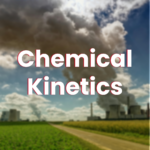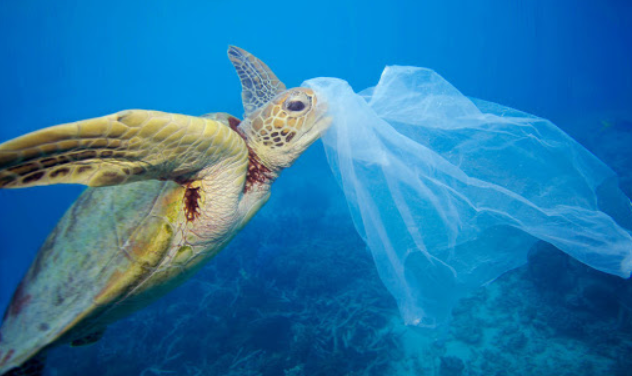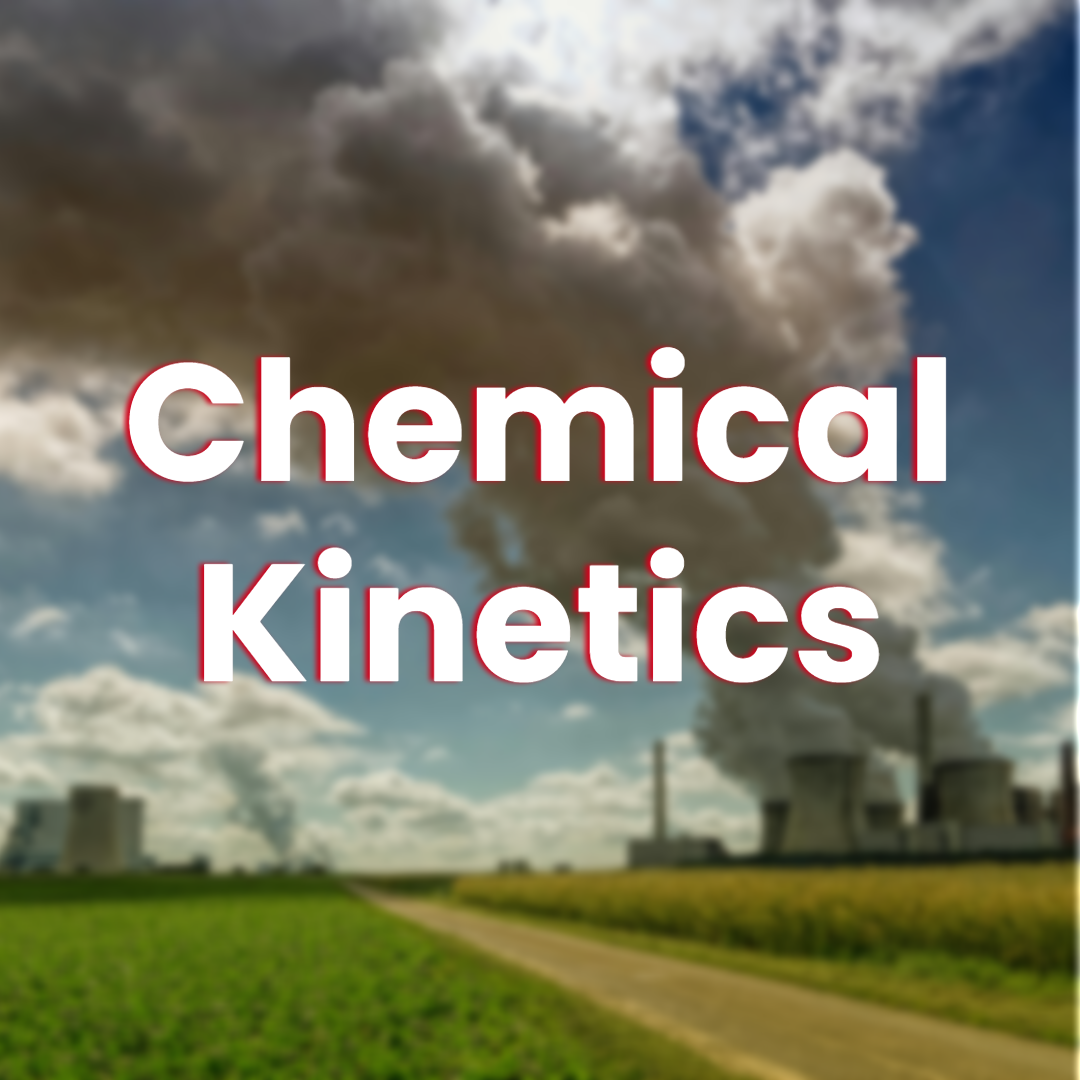Plastics have had a significant impact on society and the economy, revolutionizing everything from packaging and transportation to medicine and technology. Learn more here.
We will provide some interesting Chemistry Research topics , this will help you to gain more knowledge about different spheres of chemistry. CLICK
Introduction
Plastics are a wide range of synthetic or semi-synthetic materials that use polymers as a main ingredient. Their plasticity makes it possible for plastics to be moulded, extruded or pressed into solid objects of various shapes. This adaptability, plus a wide range of other properties, such as being lightweight, durable, flexible, and inexpensive to produce, has led to its widespread use.

The success and dominance of plastics starting in the early 20th century has caused widespread environmental problems, due to their slow decomposition rate in natural ecosystems. Toward the end of the 20th century, the plastics industry promoted recycling in order to ease environmental concerns while continuing to produce virgin plastic and to push the responsibility of plastic pollution onto the consumer. The main companies producing plastics doubted the economic viability of recycling at the time, and the economic viability has never improved. Plastic collection and recycling is largely ineffective because of failures of contemporary complexity required in cleaning and sorting post-consumer plastics for effective reuse. Most plastic produced has not been reused, either being captured in landfills or persisting in the environment as plastic pollution. Plastic pollution can be found in all the world’s major water bodies, for example, creating garbage patches in all of the world’s oceans and contaminating terrestrial ecosystems. Of all the plastic discarded so far, some 14% has been incinerated and less than 10% has been recycled.

In developed economies, about a third of plastic is used in packaging and roughly the same in buildings in applications such as piping, plumbing or vinyl siding. Other uses include automobiles (up to 20% plastic[4]), furniture, and toys. In the developing world, the applications of plastic may differ; 42% of India’s consumption is used in packaging. In the medical field, polymer implants and other medical devices are derived at least partially from plastic. Worldwide, about 50 kg of plastic is produced annually per person, with production doubling every ten years.

The world’s first fully synthetic plastic was Bakelite, invented in New York in 1907, by Leo Baekeland, who coined the term “plastics”. Dozens of different types of plastics are produced today, such as polyethylene, which is widely used in product packaging, and polyvinyl chloride (PVC), used in construction and pipes because of its strength and durability. Many chemists have contributed to the materials science of plastics, including Nobel laureate Hermann Staudinger, who has been called “the father of polymer chemistry” and Herman Mark, known as “the father of polymer physics“.

Types of plastics
Commodity plastics
Chemical structures and uses of some common plastics
Around 70% of global production is concentrated in six major polymer types, the so-called commodity plastics. Unlike most other plastics these can often be identified by their resin identification code (RIC):Polyethylene terephthalate (PET or PETE)High-density polyethylene (HDPE or PE-HD)Polyvinyl chloride (PVC or V)Low-density polyethylene (LDPE or PE-LD),Polypropylene (PP)Polystyrene (PS)
Polyurethanes (PUR) and PP&A fibres are often also included as major commodity classes, although they usually lack RICs, as they are chemically quite diverse groups. These materials are inexpensive, versatile and easy to work with, making them the preferred choice for the mass production everyday objects. Their biggest single application is in packaging, with some 146 million tonnes being used this way in 2015, equivalent to 36% of global production. Due to their dominance; many of the properties and problems commonly associated with plastics, such as pollution stemming from their poor biodegradability, are ultimately attributable to commodity plastics.
| Polymer | Production (Mt) | Percentage of all plastics | Polymer type | Thermal character |
|---|---|---|---|---|
| Low-density polyethylene (LDPE) | 64 | 15.7% | Polyolefin | Thermoplastic |
| High-density polyethylene (HDPE) | 52 | 12.8% | Polyolefin | Thermoplastic |
| polypropylene (PP) | 68 | 16.7% | Polyolefin | Thermoplastic |
| Polystyrene (PS) | 25 | 6.1% | Unsaturated polyolefin | Thermoplastic |
| Polyvinyl chloride (PVC) | 38 | 9.3% | Halogenated | Thermoplastic |
| Polyethylene terephthalate (PET) | 33 | 8.1% | Condensation | Thermoplastic |
| Polyurethane (PUR) | 27 | 6.6% | Condensation | Thermoset[27] |
| PP&A Fibers | 59 | 14.5% | Condensation | Thermoplastic |
| All Others | 16 | 3.9% | Various | Varies |
| Additives | 25 | 6.1% | – | – |
| Total | 407 | 100% | – | – |
Engineering plastics
Engineering plastics are more robust and are used to make products such as vehicle parts, building and construction materials, and some machine parts. In some cases they are polymer blends formed by mixing different plastics together (ABS, HIPS etc.). Engineering plastics can replace metals in vehicles, reducing their weight, with a 10% reduction improving fuel efficiency by 6-8%. Roughly 50% of the volume of modern cars is made of plastic but this only accounts for 12-17% of the vehicle weight.
- Acrylonitrile butadiene styrene (ABS): electronic equipment cases (e.g. computer monitors, printers, keyboards) and drainage pipe
- High impact polystyrene (HIPS): refrigerator liners, food packaging and vending cups
- Polycarbonate (PC): compact discs, eyeglasses, riot shields, security windows, traffic lights, and lenses
- Polycarbonate + acrylonitrile butadiene styrene (PC + ABS): a blend of PC and ABS that creates a stronger plastic used in car interior and exterior parts, and in mobile phone bodies
- Polyethylene + acrylonitrile butadiene styrene (PE + ABS): a slippery blend of PE and ABS used in low-duty dry bearings
- Polymethyl methacrylate (PMMA) (acrylic): contact lenses (of the original “hard” variety), glazing (best known in this form by its various trade names around the world; e.g. Perspex, Plexiglas, and Oroglas), fluorescent-light diffusers, and rear light covers for vehicles. It also forms the basis of artistic and commercial acrylic paints, when suspended in water with the use of other agents.
- Silicones (polysiloxanes): heat-resistant resins used mainly as sealants but also used for high-temperature cooking utensils and as a base resin for industrial paints
- Urea-formaldehyde (UF): one of the aminoplasts used as a multi-colorable alternative to phenolics: used as a wood adhesive (for plywood, chipboard, hardboard) and electrical switch housings
High-performance plastics
High-performance plastics are usually expensive, with their use limited to specialised applications which make use of their superior properties.
- Aramids: best known for their use in making body armor, this class of heat-resistant and strong synthetic fibers are also used in aerospace and military applications, includes Kevlar and Nomex, and Twaron.
- Ultra-high-molecular-weight polyethylenes
- Polyetheretherketone (PEEK): strong, chemical- and heat-resistant thermoplastic; its biocompatibility allows for use in medical implant applications and aerospace moldings. It is one of the most expensive commercial polymers.
- Polyetherimide (PEI) (Ultem): a high-temperature, chemically stable polymer that does not crystallize
- Polyimide: a high-temperature plastic used in materials such as Kapton tape
- Polysulfone: high-temperature melt-processable resin used in membranes, filtration media, water heater dip tubes and other high-temperature applications
- Polytetrafluoroethylene (PTFE), or Teflon: heat-resistant, low-friction coatings used in non-stick surfaces for frying pans, plumber’s tape and water slides
- Polyamide-imide (PAI): High-performance engineering plastic extensively used in high performance gears, switches, transmission and other automotive components, and aerospace parts.
Social Impact of plastics
Plastic plays many important roles, but its production, use and disposal impose countless negative impacts on society, with plastic pollution among the most pressing environmental issues of today.1 Due to its seemingly cheap price and various uses, plastic has been increasingly used across millions of applications. As a result, plastic production has almost doubled over the past two decades.2 The production of this plastic releases chemical pollutants and greenhouse gases (GHG) that can cause adverse health effects in humans and contribute to climate change.3,4 Given that much of the plastic produced is designed to be used only once,5 increasing plastic production will inevitably result in increases in plastic waste. This waste is either disposed of via processes that can also release chemical pollutants and contribute to climate change, or leaks into the environment, becoming plastic pollution. Today, more than 11 million tonnes of plastic enter the ocean every year.6Pollution in the ocean poses a threat to marine life,7 impacting the provision of ecosystem services8 and damaging key economic industries such as fisheries and tourism.9 These impacts generate significant costs for society that are not accounted for in plastic’s market price: the lifetime10 cost of the plastic produced in 2019 will be at least US$3.7 trillion (+/-US$1 trillion)11 and more than the GDP of India.12 Plastic appears to be a relatively cheap material when looking at the market price primary plastic producers pay for virgin plastic,13 In 2019, the cost was just over US$1,000 per tonne.14 However, this price fails to account for the full cost imposed across the plastic lifecycle. For example, the cost of GHG emissions from across the plastic lifecycle amounts to more than US$171 billion.15 Furthermore, the management of plastic waste cost more than US$32 billion,16 to collect, sort, dispose and recycle the huge quantities of plastic waste generated in 2019 alone.17 Plastic takes hundreds to thousands of years to fully degrade and as it degrades, it breaks down into smaller and smaller particles making it hard to recover and remove plastic from the environment. Plastic will therefore remain in the environment to incur further costs. For example, it is estimated that the plastic produced in 2019 that becomes marine plastic pollution will incur a cost of US$3.1 trillion (+/-US$1 trillion) over its lifetime as a result of the reduction in ecosystem services provided by marine ecosystems.18 There are also additional costs incurred from clean-up activities. At the same time, a lack of data prevents cost estimates for all the negative impacts of plastic, so the true lifetime cost of plastic is even higher than the current estimate suggests. There are data gaps and limitations in understanding when it comes to the size and extent of the damage caused by the plastic pollution crisis. Therefore, the current estimate is the lower bound of the full cost imposed by the plastic lifecycle. Without significant action, plastic production is expected to significantly increase, resulting in a corresponding rise in the cost imposed on society. The societal lifetime costs of the projected virgin plastic produced in 2040 (lifetime cost of plastic excluding the market cost) could reach more than US$7.1 trillion (+/-US$2.2 trillion), equivalent to approximately 85% of global spending on health in 2018 and greater than the GDP of Germany, Canada, and Australia in 2019 combined .19 Plastic production is expected to more than double by 2040 and plastic pollution in the ocean is expected to triple.20 At that point, plastic would account for up to 20% of the entire global carbon budget21 and accelerate the climate crisis. Many of the necessary global actions to tackle the plastic crisis are known, but current initiatives lack the necessary scale to drive systemic change, while regulatory approaches have been heterogenous and scattered, failing to target the fundamental problem drivers. Leading organisations 22,23,24 have proposed circular economy approaches to tackle the plastic crisis aiming to keep plastic within the economy and out of the environment. These approaches can effectively reduce the negative impacts of plastic, including reducing the annual volume of plastic entering oceans by 80% and GHG emissions by 25%.25 However, the financial and technical resources required to undertake the overhaul in systems are preventing governments from acting. At the same time, there is currently no feedback loop from the adverse aspects of the plastic system because the lifetime cost of plastic is not fully accounted for in the market price. Therefore, there is a lack of incentive to implement the kinds of systemic changes required. The lack of comprehensive data also limits governments’ understanding of the plastic crisis and ability to make informed decisions. Instead of taking a lifecycle approach, government efforts have often only tackled one stage of the plastic lifecycle or focused on a too narrow scope, such as banning single-use plastic bags.26 The transboundary nature of plastic requires a truly global response to effectively tackle the crisis, however, there is currently a notable lack of global coordination in plastic action. Plastic is transboundary in nature with the lifecycle of one item often split across various countries. Extraction of raw materials often happens in one country, conversion into plastic products in another, consumption in another, and waste management in another. Plastic pollution is also not constrained by national boundaries, because it migrates via water and air currents and settles at the seafloor. Therefore, a global response is needed to tackle the global plastic crisis. However, there is currently no global instrument established to specifically prevent marine plastic pollution or tackle plastic across its lifecycle.27 In recognition of these challenges, there are growing calls from civil society, companies and financial institutions to establish a new global treaty on marine plastic pollution. Such a treaty would enable governments to tackle the plastic crisis and reduce the cost that plastic imposes on society. A global treaty could provide a well-designed framework encompassing global coordination on definitions, policies, reporting, and implementation support to accelerate the transition to a circular economy for plastic. If developed effectively, it will act as a legally binding instrument that ensures accountability, encouraging and enabling countries to take the necessary steps to tackle the plastic crisis. Seventy five leading companies from across the plastics value chain have endorsed the Business Call for a UN Treaty on Plastic Pollution28. More than 2.1 million people from around the world have signed a WWF petition calling for a global treaty on marine plastic pollution.29 Governments are beginning to respond. As of August 2021, a majority of the UN member states (104 countries) have explicitly called for a new global agreement.30 For a new treaty to be established, governments will have to start negotiations through the adoption of a formal negotiation mandate at the 5th session of the UN Environment Assembly in February 2022.
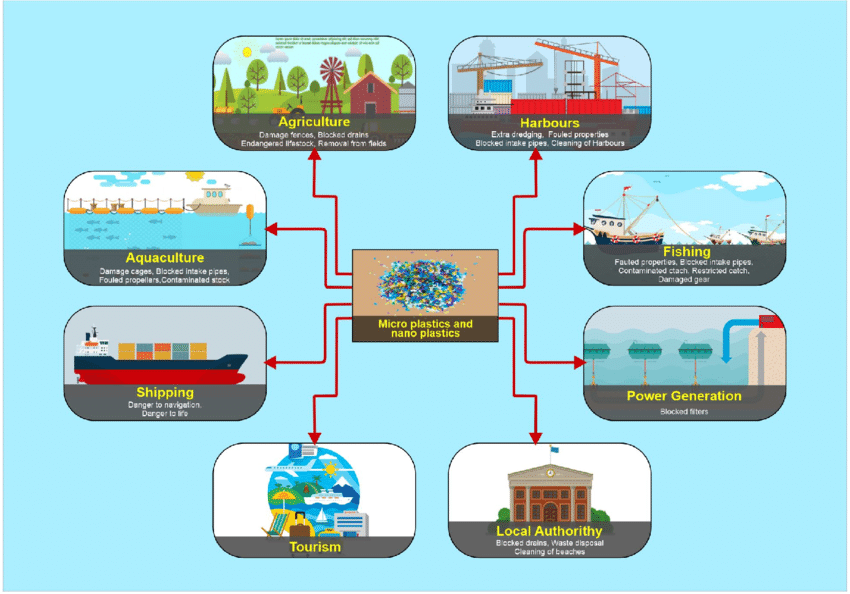
Problems
Across this lifecycle, the negative impacts of plastic
impose costs on governments and societies that are
far greater than the market cost of plastic. Some of
these negative impacts such as waste management, impose
direct economic costs, while others impose indirect costs,
placing a burden on societies and governments by impacting
the environment and human health. The durability of plastic,
while beneficial for many of its uses, means that these costs
will be incurred for long time periods. Plastic takes hundreds
to thousands of years to fully degrade and as it degrades,
it breaks down into smaller and smaller particles.46,47 This
makes plastic hard to recover and remove once it has entered
the environment. This sets the plastic crisis apart from other
materials that also impose costs not included in their price, as
they either degrade quicker (for example, paper) or are easier
to recover.
Figure 2: The lifecycle of plastic.
Costs induced by plastic not accounted for in the
market price, include:
● The cost of GHG emissions
● Health costs
● Waste management costs
● Mismanaged waste costs (see Figure 3).
While the links between the plastic lifecycle and
these externalities are well known, in some cases
a lack of data limits understanding of the extent of
those impacts. Within each cost dimension there are some
elements that are quantifiable and some that currently aren’t
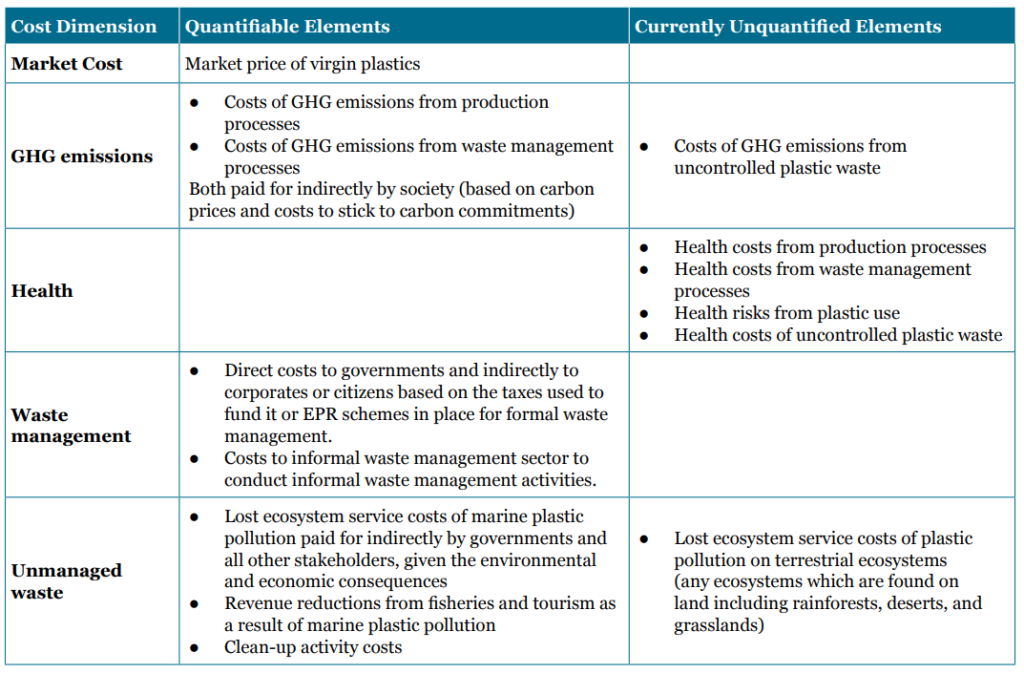
A GLOBAL TREATY ON MARINE PLASTIC POLLUTION CAN BE A UNIQUE OPPORTUNITY TO TACKLE THE PLASTIC CRISIS IF IT IS AMBITIOUS ENOUGH AND ADOPTED BY MOST COUNTRIES. An ambitious, legally binding global treaty on marine plastic pollution is likely the best tool to trigger effective global coordination and accelerate national measures and plans. Analysis by the United Nations Environment Programme (UNEP) of the effectiveness of existing and potential response options and activities on marine litter and microplastics concluded that “a well-designed international framework can address most pressures and barriers identified across all phases of the lifecycle and operate at the global scale”.183 A global treaty will provide this framework, promoting globally coordinated action on plastic, overcoming barriers to effective action, and supporting the transition to a circular economy approach
Definitions and standards should be globally agreed and harmonised, such as a globally agreed definition of the word “recycling” and standards on what must be disclosed on plastic labels. This would increase effectiveness of government efforts to tackle the plastic crisis. Harmonised definitions and standards will reduce the risk of illegal plastic imports undermining government policies (for example, what constitutes a single-use plastic bag will be consistent across countries so there is no risk of plastic bags being imported illegally). It would also facilitate recycling, for instance through labelling that discloses plastic’s ingredients and providing the information required to determine whether that plastic is recyclable under the constraints of the domestic recycling system. This would reduce the risk that plastic that is recyclable is unnecessarily disposed of due to uncertainty around the ingredients. It would also facilitate business efforts to support a circular economy for plastics. Harmonised definitions and standards would ease business operations and incentivise business innovation because there would be only one set of consistent rules to follow when trading in multiple countries. Moreover, businesses would only need to innovate once to meet the rules of all countries, rather than pursuing multiple innovations to meet various standards. Consistent standards will also reduce costs for businesses that currently struggle to comply with different fragmented standards and regulations across countries, increasing likelihood of compliance. Policy measures across all stages of the plastic lifecycle should be considered and should be prioritised based on considerations of leakage risk, proportionality, and cost-efficiency. The new treaty should set a high common standard of action, with specific and universally applicable rules. This will ensure that the international community acts in a coordinated manner, tackling all of the costs and negative impacts. Where relevant, policy measures should be adapted to national contexts, and the treaty should provide positive incentives for technical innovation and investment in new and sustainable solutions. As an example, the new treaty could require states to introduce and implement EPR schemes for the most problematic categories of plastic. This will provide incentives for companies to pursue innovative delivery models or explore environmentally sound alternatives to plastic. The treaty should set up a dedicated scientific body to assess and track the plastics problem. To ensure that the regime is gradually strengthened over time, countries should also be required to submit annual progress and monitoring reports. A key task for the scientific body would be to develop a globally agreed methodology for measuring key indicators and gathering data. This would provide the baselines needed to monitor progress and inform decision making. More comprehensive stocktaking at 4-5 year could also be considered, which would aim to ensure states stay on track to meet objectives and allow necessary adjustments to be made. This would also enable better understanding of the effectiveness of different measures which can inform future interventions. Implementation support should be provided, both in the form of a financial mechanism as well as technical support, including best practice sharing among states. This will provide the support for countries to overcome some of the barriers that are currently preventing effective action. For example, the treaty will provide the necessary financing for governments with less sophisticated waste management systems to pursue the required investments in infrastructure. The Country Deep Dives in Annex 1 provide specific examples of how the components of the treaty can support South Africa, Japan and Australia to better tackle the plastic crisis and therefore reduce the costs that the plastic lifecycle currently imposes on these countries
THE ESTABLISHMENT OF A TREATY WILL REDUCE THE ECONOMIC, ENVIRONMENTAL AND SOCIAL COSTS AS WELL AS NEGATIVE IMPACTS OF THE PLASTIC LIFECYCLE. IT WILL ALSO BE MET WITH PUBLIC SUPPORT. By enabling more effective government interventions, the treaty could help countries reduce the costs that are currently not included in the price of plastic. More effective government policy can support states with their transition to a circular economy, reducing the negative impacts of the plastic lifecycle. This would also bring the market cost more in-line with the lifetime cost of plastic. The global coordination will ensure all states are taking action, limiting the risk that countries may face negative impacts of plastic pollution that originated in neighbouring countries. Therefore, the treaty can help reduce the negative impacts of the plastic lifecycle and allow for countries to avoid the associated costs. Government commitment to the treaty is likely to be met with a strong positive reaction from the public because support for action on plastic among populations is high. Public awareness of plastic pollution has grown substantially.185 In addition, awareness and concern about other aspects of the plastic crisis is also rising. Therefore, the public now considers plastic pollution to be a significant environmental and public health issue.186 As this awareness has grown, so has public support for government action to address the plastic crisis. For example, a UNEP survey of Asian consumers and businesses found that 91% of consumers are concerned about plastic waste, and both consumers and businesses expect greater action from governments.187 Support specifically for a global treaty on marine plastic pollution is also growing, more than 2.1 million people from around the world have signed a WWF petition calling for a global treaty on marine plastic pollution.188 Governments are beginning to respond. As of August 2021, a majority of the UN member states (104 countries) have explicitly called for a new global agreement.189 A legally binding global treaty on plastic pollution could provide the required framework to support more effective national action to combat the plastic crisis. It can also facilitate the necessary global coordination to deal with the transboundary nature of the plastic crisis. This will ensure implementation of effective policies and support the transition to a circular economy for plastics. As such, the global plastic treaty has the potential to be an effective tool in the global efforts to tackle the negative impacts associated with the plastic crisis and help reduce the significant costs currently imposed on society.
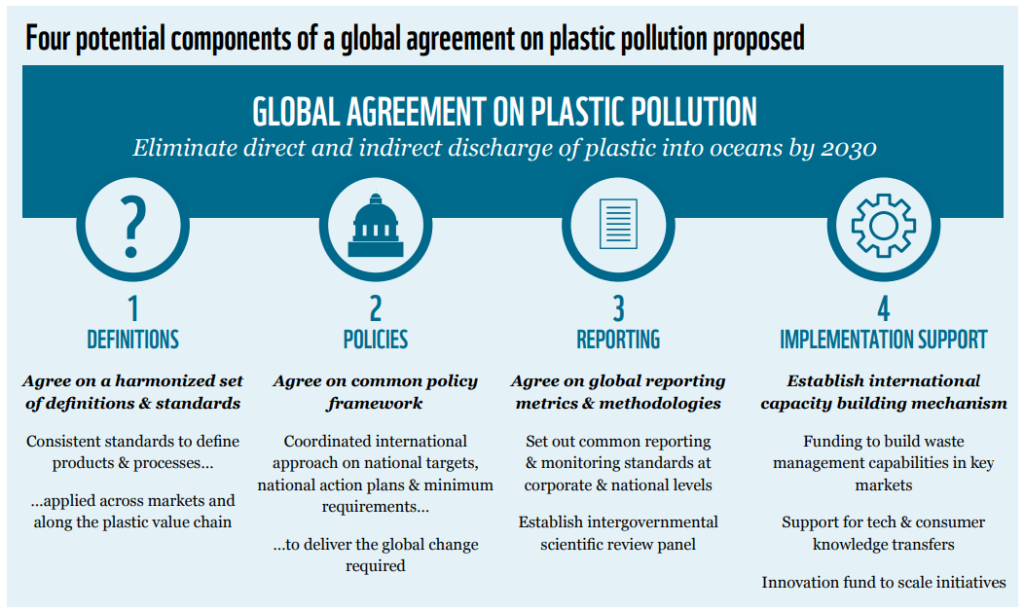
The minimum lifetime cost of the plastic produced in 2019 imposed on Australia is approximately US$12.25 billion (+/- US$3.45 billion),212 including damage caused to the economy and threats to Australia’s wildlife. Australia has a self-confessed plastic problem;213 Australians consume 3.5 million tonnes of plastic waste a year,214 including around one million tonnes of single-use plastics. 215 Australians consume more single-use plastic per capita than any other country except Singapore at 59 kg per person per year, compared with a global average of 15 kg.216 Nearly two thirds of plastics consumed are imported,217 and 93% of plastic packaging on the market is virgin plastic.218 While plastic consumption continues to rise, improved recovery rates (11.5% in 2018-2019) are not keeping pace. An estimated 130,000 tonnes of plastic waste leaks into the environment every year.219 Plastic pollution is damaging the Australian economy by negatively impacting key economic industries including fisheries, shipping and tourism. Australia’s marine economy as a fraction of GDP is the ninth highest out of the 21 APEC countries.220 The total cost of damage to Australia’s marine economies in 2015 was estimated at more than US$430 million; US$41 million in damages to fisheries and aquaculture, US$59 million to shipping, and US$330 million to marine tourism.221 These are direct costs only and exclude a wide range of remedial (clean-up) and indirect costs. Plastic poses significant threats to Australia’s wildlife. An estimated 15,000-20,000 turtles have been affected by entanglement in abandoned, lost or derelict fishing gear in the northern Gulf region (off the northern coast of Australia).222 Ingesting just one piece of plastic increases a turtle’s chance of dying by 22%, and 52% of all marine turtles are estimated to have ingested debris.223 Short-tailed shearwaters, Australia’s most numerous seabird, are also impacted by plastics with more than 67% of them found to have ingested plastic.224 Australian scientists are at the forefront of documenting this issue, and consistently advocating for policy solutions that prevent plastic leakage into the environment.225 What has been done so far: Australia is taking decisive action to tackle the plastic crisis. Environment ministers at national and sub-national levels have agreed on eight of the most problematic and unnecessary single-use plastics to be phased out by 2025.226 State and territory governments have already started phasing out these products. The Australian government has banned the export of unprocessed plastic waste from July 2021227 and established clear recycling targets to be achieved by 2025. These include 100% of packaging being reusable, recyclable or compostable, 70% of plastic packaging going on to be recycled or composted, and for all plastic packaging to comprise 20% recycled content.228 An investment of US$100 million in the Australian Recycling Investment Fund to build domestic recycling infrastructure229 is complemented by targeted investment to tackle ghost gear (US$14.8 million230) and regional investment to strengthen action against plastic pollution across the Pacific (US$16 million231). How a treaty can help: A global treaty could enhance Australia’s efforts to transition to a circular economy for plastics. A global approach to addressing plastic pollution that addresses the full lifecycle of plastics could positively impact on five of the ten key challenges to circularity identified in Australia’s circular economy roadmap.232 These include recyclability of imported plastics, demand for recycled products, standards for recycled materials and products, and lifecycle research on plastics. While Australia’s circular economy roadmap provides a framework for domestic transformation, international factors – including the global trade in plastic, research, and innovation – have the capacity to support or undermine Australia’s transition efforts. An effective global agreement would provide a supportive and complementary framework for domestic action. Conversely, a lack of global coordination could undermine Australia’s efforts. Australian coastlines are impacted by both domestic and international marine plastic pollution. While the majority of ocean pollution comes from domestic sources, research indicates that international sources do contribute to the problem in Northern Australia and other locations.233 Of the top 20 plastic emitters into the ocean globally, half are in the Asia-Pacific region.234 Even if domestic policies effectively reduce Australia’s plastic leakage into the ocean, Australia will continue to be impacted by marine plastic pollution if neighbouring countries fail to reduce their plastic leakage. A treaty could mitigate this risk through a concerted global effort to reduce pollution at the source, with a strong focus on the largest emitters. The treaty could also provide the opportunity for Australia to become a recognised global leader on plastic pollution by sharing best practice developed by governments, scientists, NGOs, businesses and communities. Australia’s unique approach to the plastic crisis draws on its geography, strong public support, innovation and a strong connection to its pristine natural environments and wildlife. Governments are increasingly collaborating to transition to a circular economy and build domestic recycling capacity. Australian scientists make a substantial contribution to the global evidence base on plastic pollution impacts and solutions. And Australian innovation, epitomised by movements such as Plastic Free July and products such as KeepCup, is demonstrating sustained impact internationally. Australia has a significant contribution to make to a global approach, that could be readily shared with other countries via the technical support component of the treaty.
Japan is the second highest per capita plastic packaging waste generator in the world, with plastic being an important part of Japanese commerce. Plastic is an integral part of society in Japan, with single-use plastic wrapped around individual pieces of food such as bananas for food safety reasons. As such, Japan produces around nine million tonnes of plastic waste per year,236 making it the second highest per capita plastic packaging waste generator in the world, second only to the US.237 Plastic leakage from Japan and its neighbours is polluting the water bodies surrounding Japan and threatening both tourism and the fisheries and aquaculture industry. Plastic pollution is overwhelming the bodies of water surrounding Japan; plastic levels in East Asian seas are 16 times greater than in the North Pacific and 27 times greater than in the world oceans.238 The Kansai Regional Union estimates that 3 million plastic bags and 6.1 million pieces of vinyl linger in Osaka Bay. Lots of debris is found in the offshore areas surrounding Japan, much of which was traced back to Japanese sources.239 This waste is impacting the tourism industry with plastic waste washing up on many of Japan’s beaches and deterring visitors. This has the potential to be highly damaging to Japan’s economy, with the travel and tourism industry contributing more than USD$300 billion in 2019.240 This pollution also affects Japan’s fisheries; nearly 80% of the 64 Japanese anchovies caught during a survey of Tokyo Bay had plastic waste inside their digestive systems.241 This can impact both the volume and quality of the fishing yield, leading to reduced revenues for the fishery sector and putting significant numbers of jobs at risk. In 2018, employment in the seafood sector, including processing, accounted for 202,430 jobs.242 It can also increase the risk of ingestion of microplastics by humans through consumption of the contaminated fish. What has been done so far: Japan has developed a sophisticated waste management system which aims to recycle or recover significant proportions of plastic waste, therefore limiting leakage into the environment. In 2000, the Basic Act for Establishing a Sound-Material-Cycle Society came into force.243 The act aimed to promote the three Rs (reduce, reuse, recycle) and ensure proper waste management. As part of this, waste is mandatorily separated and plastic recycled, with consumers educated on how to sort and dispose of waste. There is relatively high compliance, with the Japanese population committed to undertaking the sometimes complex task of sorting their waste. This is a relatively efficient system with strong potential to reduce plastic leakage; according to the UN, an effective waste management system means that Japan accounts for relatively limited leakages of single-use plastics in the environment.244 However, there is still a significant opportunity for the government to improve the effectiveness of their plastic action and reduce the negative consequences of plastic production, use, and leakage in Japan. According to official numbers, in 2018 Japan recycled or recovered 84% of the plastic collected.245 However, this includes the 56% of plastic waste that is incinerated for energy.246 Therefore, the majority of plastics are not being recycled into new products, necessitating new virgin plastic production. Additionally, although Japan has implemented emissions controls to reduce the chemical pollutants produced from incineration, incineration is still a net contributor of GHG emissions. Therefore, Japan’s reliance on incineration for waste management is contributing to the climate crisis on two fronts; directly from the emissions produced from the process itself and indirectly by contributing to GHG emissions from new virgin plastic production. There is also no regulation on primary microplastics such as microbeads and microfibers which municipal sewage systems are typically unable to remove. As a result, the particles pass through the plant and are discharged into nearby waters, further contributing to plastic leakage and imposing the associated costs.

Economical Impact of plastics
aluing Plastic, a UNEP-supported report produced by the Plastic Disclosure Project (PDP) and Trucost, makes the business case for managing and disclosing plastic use in the consumer goods industry. It finds that the overall natural capital cost of plastic use in the consumer goods sector each year is US$75 billion – financial impacts resulting from issues such as pollution of the marine environment or air pollution caused by incinerating plastic.
The report says that over 30 per cent of the natural capital costs of plastic are due to greenhouse gas emissions from raw material extraction and processing. However, it notes that marine pollution is the largest downstream cost, and that the figure of US$13 billion is likely a significant underestimate.
“Plastics have come to play a crucial role in modern life, but the environmental impacts of the way we use them cannot be ignored,” said Achim Steiner, UN Under-Secretary-General and UNEP Executive Director. “These reports show that reducing, recycling and redesigning products that use plastics can bring multiple green economy benefits – from reducing economic damage to marine ecosystems and the tourism and fisheries industries, vital for many developing countries, to bringing savings and opportunities for innovation to companies while reducing reputational risks.”
“Our economies are still largely fossil-fuel based, with the environmental, economic and health costs hidden,” he added. “For example, in the polar regions, scientists have recently found tiny pieces of plastic trapped in sea ice. Transported by ocean currents across great distances, these contaminated particles eventually become a source of chemicals in our food. The key course of action is to prevent plastic debris from entering the environment in the first place, which translates into a single powerful objective: reduce, reuse, recycle.”
A large and unquantifiable amount of plastic waste enters the ocean from littering, poorly managed landfills, tourist activities and fisheries. Some of this material sinks to the ocean floor, while some floats and can travel over great distances on ocean currents – polluting shorelines and accumulating in massive mid-ocean gyres.

There have been many reliable reports of environmental damage due to plastic waste: mortality or illness when ingested by sea creatures such as turtles, entanglement of animals such as dolphins and whales, and damage to critical habitats such as coral reefs. There are also concerns about chemical contamination, invasive species spread by plastic fragments, and economic damage to the fishing and tourism industries in many countries – by, for example, fouling fishing equipment and polluting beaches.
Since 2011, when the UNEP Year Book process last looked at plastic waste in the ocean, concern has grown over microplastics (particles up to 5 mm in diameter, either manufactured or created when plastic breaks down). Their ingestion has been widely reported in marine organisms, including seabirds, fish, mussels, worms and zooplankton.
One emerging issue is the increasing use of microplastics directly in consumer products, such as microbeads in toothpaste, gels and facial cleansers, the Year Book says. These microplastics tend not to be filtered out during sewage treatment, but are released directly into rivers, lakes and the ocean.

Communities of microbes have been discovered thriving on microplastics at multiple locations in the North Atlantic. This “plastisphere” can facilitate the transport of harmful microbes, pathogens and algal species. Microplastics have also been identified as a threat to larger organisms, such as the endangered northern right whale, which is potentially exposed to ingestion through filter-feeding.
Production trends, use patterns and changing demographics are expected to cause increasing plastic use, and both reports call for companies, institutions and consumers to reduce their waste.
Valuing Plastic finds that consumer goods companies currently save US$4 billion each year through good management of plastic, such as recycling, and that there is potential for greater savings. However, plastic use disclosure is poor: of 100 companies assessed, less than half reported any data relevant to plastic.
“The research unveils the need for companies to consider their plastic footprint, just as they do for carbon, water and forestry,” said Andrew Russell, Director of the PDP. “By measuring, managing and reporting plastic use and disposal through the PDP, companies can mitigate the risks, maximize the opportunities, and become more successful and sustainable.”

Initiatives such as the PDP and the UNEP-led Global Partnership on Marine Litter have helped raise awareness of, and begun to address, the issue. However, much more needs to be done. Recommendations for further action from the reports include:
- Companies should monitor their plastic use and publish the results in annual reports.
- Companies should commit to reducing the environmental impact of plastic through clear targets and deadlines, and innovate to increase resource efficiency and recycling.
- There should be an increased focus on awareness campaigns to discourage littering and prevent plastic waste from reaching the ocean. An application that allows consumers to check whether a product contains microbeads is already available and is expanding its coverage internationally. It can be downloaded from http://get.beatthemicrobead.org/
- Since plastic particles can be ingested by marine organisms and potentially accumulate and deliver toxins through the food web, efforts should be stepped up to fill the knowledge gaps and better understand the capacity of various plastics to absorb and transfer persistent, toxic and bioaccumulating chemicals.
“Natural capital valuation has the power to help organizations understand their environmental impacts, including pollution of the ocean,” said Richard Mattison, Trucost Chief Executive. “By putting a financial value on impacts such as plastic waste, companies can further integrate effective environmental management into mainstream businesses. By highlighting the savings from reuse and recycling, it builds a business case for proactive sustainability improvements.”
Other issues
“Ten years ago UNEP alerted the world to the development of dead zones in coastal waters resulting from excess nitrogen seeping into the water,” said Mr. Steiner. “That was in the first edition of the Year Book series. In the intervening period many more emerging issues have been identified, with some rising to crisis level and others showing encouraging improvement.”
“The 2014 Year Book shows how scientific endeavours and policy actions have led to innovative solutions and vital advancements,” he added. “It reconfirms the critical role that the environment plays in maintaining and improving the health of people and ecosystems; from well-managed soils and nutrients that underpin food production to the critical role of biodiversity in protecting human health against the spread of infectious diseases. Clean air in our cities prevents the premature death and illness of millions and can save society trillions of dollars.”
The UNEP Year Book 2014 lays out the state of play in critical areas, including:
Nitrogen
First looked at in 2003 by the Year Book team, nitrogen continues to be used inefficiently as a plant nutrient in many of the world’s agricultural systems. The amount of usable nitrogen produced by humans is now about 190 million tonnes per year, greater than the 112 million tonnes created through natural processes.
As nitrogen moves through the environment, the same nitrogen atom can contribute to multiple negative effects in the air, on land, in freshwater and marine systems, and on human health. This sequence continues over a long period and is referred to as the “nitrogen cascade”.

Excess nitrogen in the environment contributes to many problems, including:
- Coastal dead zones and fish kills due to severe eutrophication (a high concentration of nutrients, which leads to excessive plant growth and oxygen deprivation). There are currently over 500 known coastal dead zones in well-studied areas of the world, whereas in 2003 only around 150 such oxygen-depleted areas were reported. Once other regions start reporting, it is estimated that 1000 coastal and marine areas will be identified as experiencing the effects of eutrophication.
- Nitrogen emissions to the air, notably those of nitrous oxide (N2O), contribute to climate change. Sometimes referred to as the “forgotten greenhouse gas”, N2O is over 300 times more effective at trapping heat in the atmosphere than carbon dioxide over a 100-year period. Human activities such as agriculture, deforestation and fossil fuel combustion are increasing the amount in the atmosphere.
Better management practices are essential for improving nitrogen use efficiency, the Year Book finds. This is the most cost-effective option for reducing nitrogen losses to the environment from agricultural sources.
According to the recent UNEP-commissioned report, Our Nutrient World, a 20 per cent improvement in global nutrient use efficiency by 2020 would reduce annual use of nitrogen by an estimated 20 million tonnes. This could produce savings of between US$50 and US$400 billion per year in terms of improvements in human health, climate and biodiversity.

Marine Aquaculture
Aquaculture production has increased since the 1950s from 650 thousand tonnes to almost 67 million tonnes, and today provides half of all fish for human consumption. Marine aquaculture production by volume grew by 35 per cent during the last decade, while production in fresh and brackish water grew by 70 and 83 per cent, respectively.
While progress has been made towards making marine aquaculture more sustainable, environmental concerns remain. Fish farms can release nutrients, undigested feed and veterinary drugs to the environment. They can also increase risks of diseases and parasites and of harmful algal blooms. In some countries, certain forms of shrimp farming have destroyed large areas of coastal habitats, such as mangrove forests.
Healthy marine ecosystems are fundamental to reaching development goals, with respect to securing food and providing jobs. Marine aquaculture’s impacts and predicted growth call for strengthened efforts towards environmentally sound development of the sector to avoid the loss of important ecosystem services.
Technical innovations, the experience and growing skills of aquaculture producers, and improved knowledge of environmental impacts and operational and governance opportunities provide hope for a sustainable marine aquaculture sector supporting a growing world population with food and livelihoods.

Air Quality
The World Health Organization (WHO) estimates that in 2012, air pollution led to around 7 million premature deaths (one out of eight total global deaths), more than double previous estimates. It is the leading cause of environmentally related deaths.
Air quality is deteriorating in most cities where there are sufficient data to make comparisons with previous years. The WHO guideline for average annual fine particulate matter is 25 microgrammes per cubic metre. Cities in low- and middle-income countries far exceed this level. For example, in Kathmandu, Nepal, particulate matter (PM2.5) levels of over 500 microgrammes per cubic metre have been measured.
The cost of air pollution to the world’s most advanced economies, plus India and China, is estimated at US$3.5 trillion per year in lives lost and ill health. In Organisation for Economic Co-operation and Development (OECD) countries, the monetary impact of death and illness due to outdoor air pollution is estimated to have been US$1.7 trillion in 2010. Research suggests that motorized on-road transport accounts for about 50 per cent of that amount.
In light of the high costs related to the health and environmental effects of air pollution, all countries should invest in clean air policies, the report says.

Citizen Science
Citizen science, research conducted in whole or part by the public, can go beyond simple data collection to help shape fundamental questions about our world and provide intriguing answers, the report finds. It has grown in the past decade, due in part to the Internet, social media, and other technologies. Opportunities to volunteer to take part in scientific research have exploded, from analyzing cancer data to theoretical physics.
Indigenous groups can make important contributions through citizen science, including the use of traditional knowledge, to help protect resources and influence environmental policies. Data and other information generated through citizen science projects have been shown to be reliable and accurate. However, there are barriers to realizing the full potential of citizen science, which can be overcome by:
- Better coordination among scientists and project developers to make use of and collaborate with established and proven projects, in order to reduce the redundancy of projects.
- Stronger recognition of data from citizen science by scientific communities.
- Global coordination to aggregate and analyze data generated by citizen science, which would help reveal valuable information that might be useful for policymakers.

The Circular Economy The circular economy is an alternative to the current linear, make, use, dispose, economy model, which aims to keep resources in use for as long as possible, to extract the maximum value from them whilst in use, and to recover and regenerate products and materials at the end of their service life . The circular economy promotes a production and consumption model that is restorative and regenerative by design . It is designed to ensure that the value of products, materials, and resources is maintained in the economy at the highest utility and value, for as long as possible, while minimising waste generation, by designing out waste and hazardous materials. The circular economy applies both to biological and technical materials. It embraces systems thinking and innovation, to ensure the continuous flow of materials through a ‘value circle’, with manufacturers, consumers, businesses and government each playing a significant role . The World Economic Forum reported that material (technical and biological) cost savings of up to $1 trillion per year could be achieved by 2025 by implementing the circular economy worldwide64 . And the World Business Council for Sustainable Development (WBCSD) “CEO Guide to the Circular Economy” indicates that the circular economy could help unlock USD 4.5 trillion of business opportunities while helping to fulfil the Paris Agreement . Implementing the circular economy across the energy, built environment, transport, and food sectors in Europe could reduce carbon emissions by 83% by 2050 compared to 2012 levels . A study by the Club of Rome also indicates that transitioning to a circular economy across various economic sectors in five European countries (Finland, France, the Netherlands, Spain and Sweden) by 2030 could lead to a two-thirds reduction in carbon emissions, lower business costs, and create up to 1.2 million jobs . While studies on developing countries are scarce, UNDP reported that circular economy strategies could help the Lao DPR achieve its climate mitigation targets, while also developing local industries, reducing dependency on resource rents, imported materials and products, thus helping to eradicate poverty.
Circular Economy Solutions for the Plastic Sector
The Ellen MacArthur Foundation summarised the goals for a circular economy in the plastics sector as follows: improve the economic viability of recycling and reuse of plastics; halt the leakage of plastics into the environment, especially waterways and oceans; and decouple plastics production from fossil-fuel feedstocks, while embracing renewable feedstocks .

Recent science and innovation highlights examples of how these goals might be achieved:
(i) Produce plastics from alternative feedstocks. Examples of alternative feedstocks include greenhouse gas such as CO2 and methane, bio-based sources such as oils, starch, and cellulose, as well as naturally occurring biopolymers, sewage sludge and food products. Some plastics can be produced using benign and biodegradable materials . And eco-friendly alternative flame retardants have been developed which could eliminate the use of some hazardous chemicals in plastics manufacture.
To mitigate the adverse effects of the current mainly linear plastics production and use model, plastics production from renewable sources needs to increase to reduce dependence on fossil fuels significantly. Production processes and products should be redesigned to improve longevity, reusability, recyclability, as well as to prevent waste and chemical pollution prevention. Sustainable business models that promote products as services, facilitate sharing and leasing of plastic products, and increase reuse should also be encouraged. Plastics at the end of life should increasingly be recycled into new products to significantly reduce the volume of plastics leaking into the environment.
(ii) Use plastic waste as a resource The capture and recovery of plastic waste for remanufacturing into new products has been widely demonstrated, for example, for making bricks and composites , in road construction , for furniture, as well as for making clothes and footwear. Plastic waste has also been converted to liquid fuel and has been burned as fuel in a waste-to-energy cycle, though there are downsides to the latter . Through chemical recycling, the petrochemical components of plastic polymers can also be recovered for use in producing new plastics, or for the production of other chemicals, or as an alternative fuel . For example, a recent study successfully developed plastics that can be chemically recycled and reused infinitely . Studies also suggest that polyethylene plastic, a significant proportion of manufactured plastics globally, can be broken down by bacteria and caterpillars, highlighting opportunities for biobased recycling of waste plastics .

(iii) Redesign plastics manufacturing processes and products to improve longevity, reusability and waste prevention, by incorporating after-use, asset recovery, and waste and pollution prevention into the design from the outset. This means adopting a life-cycle approach including: cleaner production; discouraging single- and other avoidable plastics use; as well as designing products for appropriate lifetimes, extended use, and for ease of separation, repair, upgrade and recycling; eliminating toxic substances; and preventing the release of microplastics into the environment by redesigning products. For example, designing clothes and tires to reduce wear and tear, and eliminating, or using alternatives to, microplastics in personal care products such as toothpaste and shampoo. A further example, of redesign is the bulk delivery of cleaning and personal care products supplied with refillable plastic containers, thereby eliminating single-use bottles. Existing applications of this model include Replenish bottles, Petainer packaging, and Splosh. Another example is reusable beverage bottles as an alternative to single-use bottles, for example, a returnable bottle system and refillable bottles, which can lower material costs and reduce greenhouse gas emissions.

(iv) Increase collaboration between businesses and consumers to increase awareness of the need for, and benefits of, a shift from non-essential plastic use and a throw-away culture, to encourage recycling, and to increase the value of plastic products, for example, by using by-products from one industry as a raw material for another (industrial symbiosis). Several analyses have highlighted the climate and environmental benefits from plastic waste recycling through industrial symbiosis. Households can be included in the symbiosis process, by strengthening waste collection systems and by creating innovative and effective take-back programs . Analysis of urban-industrial symbiosis (exchanging resources between residential and industrial areas) in a Chinese city indicated that producing energy from plastic waste led to an annual reduction in CO2 emissions of 78,000 tonnes while avoiding the discharge of 25,000 tonnes of waste plastics a year into the environment .
(v) Embrace sustainable business models which promote products as services and encourage the sharing and leasing of plastic products. This would optimise product utilisation and increase revenue while decreasing the volume of manufactured goods. An example of this is the leasing of water dispensers and refillable plastic bottles to households and offices. Another example is the Lego’s Pley system where consumers rent and return Lego sets rather than buy them .
(vi) Develop robust information platforms which provide data on the composition of plastic products, track the movement of plastic resources within the economy, support cross-value chain dialogue and the exchange of knowledge, and build on experiences gained through existing global institutional networks. An example of a global network is the RECPnet (Resource Efficient and Cleaner Production Network) that promotes resource-efficient cleaner production and facilitates collaboration including through the transfer of relevant knowledge, experiences and technologies .
(vii) Policy instruments including fiscal and regulatory measures to deal with the negative effects of the unsustainable production and use of plastics. Without these measures, markets would continue to favour fossil feedstocks, especially when oil prices are low, and the barriers to achieving the circular economy would be more difficult to overcome. Ensuring that the costs of unsustainable production and use are taken into account would encourage production from alternative less harmful sources, as well as prevent waste, and stimulate reuse and recycling. Fiscal policy measures, for example, direct surcharges, levies, carbon or resource taxes and taxes on specific types of plastic such as plastic bags, disposable cutlery and other one-use items, may be needed to discourage non-essential plastic use, and other unsustainable practices, while helping to improve the uptake, financial viability and quality of plastic recycling. Other regulatory and policy measures are needed, including recycling targets, extended producer responsibility, container deposit legislation, mandatory requirements and standards for circular/eco-design, public procurement policies, bans on landfilling.

Beyond the Circular Economy in Plastics The circular economy is a necessary part of the solution to the global plastics problem but not the complete solution. Producing all plastic from alternative feedstocks is desirable, but may not be possible because it might adversely affect human food supplies, or have unintended consequences on the environment or human health. Detailed life cycle assessments are needed to understand, for example, the environmental and socio-economic impacts of using land resources for bioplastics production instead of food. And there is no universally agreed definition of plastic biodegradability: using biodegradable plastics would not decrease the leakage of plastics into the environment or reduce their associated chemical impacts
“Closing the materials loop” through the redesign and increased recycling of plastic products would also not be sufficient. The first priority is, therefore, to discourage non-essential production and unnecessary consumption or use of plastics. There are many ways to do this: eradicating excessive plastic packaging on products such as food; eliminating the non-essential use of micro-sized plastics in personal care products; and promoting the use of renewable and recyclable alternatives to plastics, for example, wooden cutlery as an alternative to disposable plastic utensils, and cellulose-based materials as a replacement for plastic packaging and bags .

Why is this important to the GEF? The continued rapid growth in the production and use of plastics will have a severe and deleterious effect on the GEF’s ability to deliver its objectives in the following areas:
• Chemicals and waste: POPs, such as SCCP, PCBs, and PBDEs including tetraBDE, pentaBDE, octaBDE and decaBDE, are used as chemical additives in some plastics, particularly in the electrical and electronic, automotive, furniture and toy manufacturing sectors. Dioxins and furans are also byproducts of PVC manufacture used in building and construction. The use of these chemicals has been banned under the Stockholm Convention, but legacies of their historical use remain in old products. The burning of plastics, especially those containing chlorinated and brominated additives, releases POPs unintentionally, including dioxins. It has been proposed that the Stockholm Convention could use existing measures to regulate the production, use, as well as import and export of POPs destined for use in plastics and plastic waste containing or contaminated with POPs. • Climate change mitigation: producing plastics using fossil fuels is an important source of greenhouse gas emissions, as is the open burning and incineration of plastic wastes. Recycling all global plastic waste could provide an annual energy saving equivalent to 3.5 billion barrels of oil per year. Another estimate indicates that recycling half of the projected 15 million tons of waste plastics per year by 2030 would reduce CO2 emissions equivalent to taking 15 million cars off the road.
• International waters: the oceans contain over 150 Mt of plastics or 5 trillion micro (less than 5mm) and macroplastic particles, with an estimated 4.8 to 12.7 Mt, being added every year. Plastics pollution is prevalent in all oceans globally, with a significant proportion of discharge originating from a few countries and rivers. Microplastics are an emerging threat to freshwater, affecting water quality, security and safety in freshwater ecosystems.

• Biodiversity: plastics pollution is the second most significant threat to the future of coral reefs, after climate change. The impact of plastic on marine species, including entanglement and ingestion by turtles, birds, fish and mammals, is well documented, with 17% of species affected listed as threatened or near threatened in the International Union for Conservation of Nature (IUCN) . Many of the chemicals additives used in plastics have proven adverse effects on fisheries and their habitats
• Land degradation and food systems: the emerging threat from microplastics to terrestrial ecosystem, especially agricultural soils could lead to further land degradation affecting food production, including through plant uptake of microplastics from contaminated soils. The use of plastics in agriculture, for example as mulches, in greenhouses and various agricultural coverings, is causing contamination of agricultural soils.

• Sustainable Cities: households in urban areas and cities are major consumers of plastics, and also major generators of plastic waste. Cities are responsible for a significant portion of the land-based release of plastics into the environment, especially in places where waste management systems are poorly developed. The Sustainable Cities IAP offers good opportunities to implement the circular economy, by reducing consumption, for example, using alternatives to PVC in construction, and by tackling plastic pollution. The circular economy approach can help to deliver the Sustainable Development Goals (SDGs) Goal 12 on ensuring sustainable consumption and production patterns includes targets on achieving sustainable management and efficient use of natural resources, sound management of chemicals and wastes, and improving waste prevention, reduction, recycling and reuse. Goal 8 on inclusive and sustainable economic growth includes a target to improve global resource efficiency in consumption and production and decoupling economic growth from environmental degradation. The circular economy will also contribute to achieving Goal 14 on the use of oceans, seas, and marine resources and has a target on preventing marine pollution, from land-based activities, including marine debris, of which plastics make up between 60-80%125 . Adopting a circular economy approach would also encourage innovation, create entrepreneurial opportunities and employment contributing to Goal 8 on decent work and economic growth. The benefit to society of recycling of plastic packaging126 is estimated to be more than USD 100 per tonne. The circular economy offers an opportunity for developing countries to leapfrog the linear ‘take, make, use, and dispose’ economic and development model followed by developed countries, to a more sustainable development pathway that avoids locking in resource-intensive practices and infrastructure .

How can the GEF respond?
STAP recommends the following: In the near-term, the GEF should consider the following actions: A. Mainstream circular economy principles into GEF’s overall strategy, by including circular principles as a tool and criteria for priority setting and decision making in chemicals and waste, climate change, international waters, biodiversity, land degradation, as well as in the Sustainable Cities and Food Security IAPs. B. Invest in projects that promote circular principles in the plastic sector to deliver global environmental benefits
Plastic reuse and recycling investments: Invest in projects that: o Develop best-practice integrated waste management systems and infrastructure for the safe collection, sorting, separation, handling and processing of MSW. o Promote and scale-up high-quality recycling and use of plastic waste as a resource.

Bring private sector actors together, including small and medium scale enterprises, producers and users of plastics, as well as the informal waste management sector, to promote the adoption of the circular economy in the plastics sector. o Facilitate collaboration between businesses and consumers, to increase the value of plastic products and encourage recycling and reuse; for example, through urban-industrial symbiosis.
Plastic waste prevention and minimisation investments: Invest in projects that: o Facilitate innovation and redesign of plastics to eliminate the use of POPs and other hazardous substances and improve the longevity, reusability and recyclability of plastic products.
Develop sustainable business and finance models to promote plastic products as services, encourage the sharing and leasing of products and facilitate new product delivery systems. (This would optimise product utilisation and reduce the quantity of plastics produced, thereby saving resources and preventing waste.)

Encourage the production of plastics from alternative feedstocks especially renewable and biodegradable non-fossil feedstocks, sources, for example, sugarcane, oils and cellulose, sewage sludge, food waste, naturally occurring biopolymers as well as greenhouse gases, to mitigate climate change, without compromising the environment, food supply or human health. o Develop and implement business cases for converting fossil fuel-based plastics manufacturing facilities to use sustainable alternative feedstocks, and recycled plastics. C. Help create an enabling environment to overcome barriers and promote the adoption and implementation of the circular economy in the plastics sector. The GEF could support projects and activities that help:
• Develop supportive policies and regulations for a circular economy, including economic incentives. • Facilitate technical assistance and capacity building, especially in waste management.
• Create awareness-raising activities to encourage changes128, for example, through educational materials that encourage less consumption, discourage the throwaway culture, facilitate the acceptance of recycled plastic products, disseminate successful case studies and incorporate plastics recycling concepts into school curricula.
• Promote public-private cooperation and investment in sustainable plastic manufacturing, reuse, recycling and waste management.
• Prepare national circular economy strategies and implementation plans. D. Incorporate plastic pollution mitigation into GEF’s Sustainable Cities IAP. Cities are a primary source of plastic consumption and pollution, and the sustainable cities IAP could be used to implement some of the proposed solutions, which could serve as case studies or pilots, to demonstrate opportunities, catalyse innovation, and leverage technical expertise, as well as investors. 17 Looking further ahead, the GEF should consider the following actions: E. Support the development of circular economy indicators relevant to the GEF: there are several studies underway on suitable indicators for measuring the transition to a circular economy, but no consensus. GEF could develop indicators relevant to its business. F. Collaborate with, and support partnerships and projects. This could be with governments, civil societies or private sector-led partnerships, for example, the Commonwealth Clean Oceans Alliance , the Clean Seas Campaign, and plastic clean-up efforts , for example, in partnership with the private sector. A partnership between Adidas and Parley has resulted in the sales of one million shoes made from recycled ocean plastics. Such partnerships could also focus on improving standardisation and transparency of the chemical content of plastic, and on agreeing on the labelling of plastic products to aid decision-making on reuse, remanufacturing and recycling. G. Facilitate and support innovation and applied research: research and innovation are essential tools for realising the transition to a circular economy in the plastics and other sectors. GEF could help set the research agenda and spur innovation in the various aspects of circular economy relevant to its work by engaging with the research and innovation communities and bringing relevant issues to the table. Areas of research interest include redesigning plastics manufacturing processes and products to enhance longevity; scaling up recently discovered opportunities for bio-based recycling of waste plastics; and developing novel business models for delivering plastics products as services, especially in developing countries. Focusing the GEF’s actions The global production of plastic has shifted to Asia, where there are plenty of opportunities for GEF’s investment to support a shift from unsustainable fossil-based production to renewable feedstocks-based production. The GEF could also target sectors where POPs are used as additives in plastics such as PVC processing, electrical and electronic, automotive, furniture, building materials, and toy manufacturing. Up to 75% of the land-based release of plastics into the oceans is from uncollected waste, with the remainder due to leakage from waste management systems. Investment in waste management could focus on the 20 rivers leaking the most plastics into the oceans . Developing effective waste management systems would, however, require substantial investment, and may, therefore, involve public-private partnerships and support from Multilateral Development Banks.
Bibliography
- https://en.wikipedia.org/wiki/Plastic
- https://mb.cision.com/Public/491/3410236/990cbb97a02e0eee.pdf
- https://www.unep.org/news-and-stories/press-release/plastic-waste-causes-financial-damage-us13-billion-marine-ecosystems#:~:text=It%20finds%20that%20the%20overall,pollution%20caused%20by%20incinerating%20plastic.
- https://www.stapgef.org/sites/default/files/documents/PLASTICS%20formatted%20for%20posting.pdf
- https://www.researchgate.net/figure/The-social-and-economic-impact-of-micro-and-nanoplastics_fig8_349206699/download
Acknowledgment:
The success and final outcome of this project required a lot of guidance and assistance from many people and I am extremely privileged to have got this all along the completion of my project. All that I have done is only due to such supervision and assistance and I would not forget to thank them.
I respect and thank Mr./Ms. [NAME 1], for providing me an opportunity to do the project work in [VENUE] and giving us all support and guidance which made me complete the project duly. I am extremely thankful to [her/him] for providing such a nice support and guidance, although he had busy schedule managing the corporate affairs.
I owe my deep gratitude to our project guide [NAME 2], who took keen interest on our project work and guided us all along, till the completion of our project work by providing all the necessary information for developing a good system.
I would not forget to remember [NAME 3 AND NAME 4], of [COMPANY NAME] for their encouragement and more over for their timely support and guidance till the completion of our project work.
I heartily thank our internal project guide, [Name 5], [Position] , [Department] for her/his guidance and suggestions during this project work.
I am thankful to and fortunate enough to get constant encouragement, support and guidance from all Teaching staffs of [Department name] which helped us in successfully completing our project work. Also, I would like to extend our sincere esteems to all staff in laboratory for their timely support.
I would like to express my sincere gratitude to [NAME 3] and [NAME 4] from [COMPANY NAME] for their encouragement and timely support throughout our project. I am also thankful to our internal project guide, [Name 5], [Position], [Department], for their invaluable guidance and suggestions. Furthermore, I extend my heartfelt appreciation to all the teaching staff of [Department name] and the laboratory staff for their constant encouragement and support, which played a significant role in the successful completion of our project.




